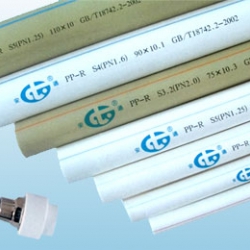The structure of Antong PP-R aluminum-plastic composite pipe is: outer layer PP-R, intermediate welded aluminum layer as skeleton, inner layer of cross-linked polyethylene (or polyethylene), PP-R and aluminum layer, cross-linked polyethylene The aluminum layer is bonded with a special hot melt adhesive, and the five layers are co-extruded.
Features:
A, the perfect combination of plastic and metal, so that it has the flexibility of the plastic tube and the rigidity of the metal tube, can bend without rebound. B. PP-R pipe fittings are used during installation, hot-melt connection, never leaking, and low engineering cost. C, the coefficient of thermal expansion is small, far lower than PP-R, close to the metal tube, no deformation when exposed to heat. D, the inner layer is made of cross-linked polyethylene, high temperature resistance, working temperature up to 95 °C. E. The middle layer is made of high-precision alloy aluminum, which not only increases the strength of the pipe but also enhances the oxidation resistance, keeps the water quality inside the pipe from being oxidized, and ensures the cleanliness of the water source.
Scope of application:
PP-R aluminum-plastic composite pipe, mainly used in the transportation of hot and cold water in industrial and civil buildings, heating, solar energy, central air conditioning, floor radiant heating, refrigeration, food and beverage, chemical and other pipeline systems. Especially for heating pipes, it has a unique advantage.
Comparison of various pipe properties:
Antong Management reminds you to pay attention to:
A. The use of Antong brand pipe should prevent the solid phase transformation (liquid becomes solid) in the pipe from damage to the pipeline, and protective measures must be taken.
B. In the environment with low temperature (below 5 'c), the PP-R pipe has certain brittleness, and it is strictly forbidden to throw or knock during transportation or use.
c. When installing PP-R aluminum-plastic composite pipe, special attention should be paid to the use of reamer to round the pipe welding interface before welding. When welding, the pipe and pipe fittings must be aligned in parallel and cannot be welded. To avoid leakage.


